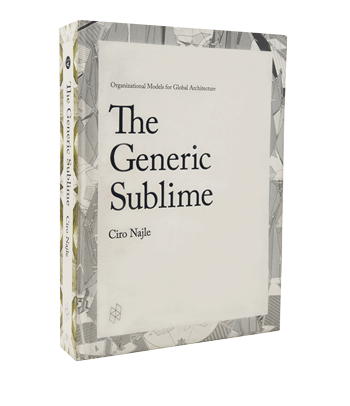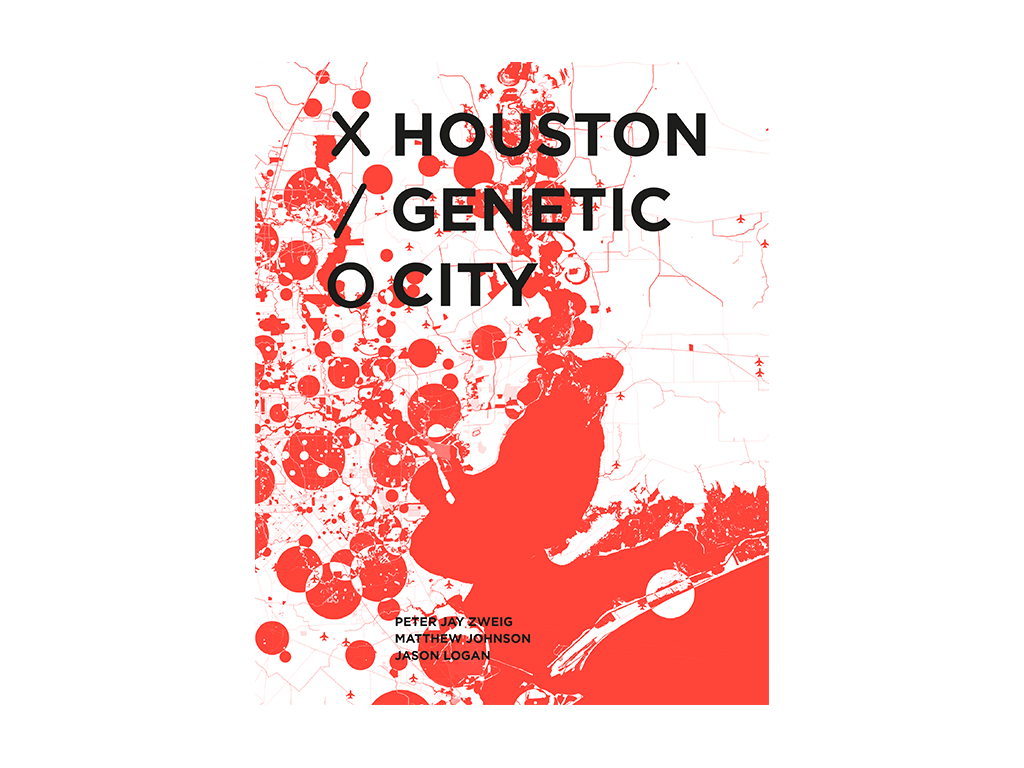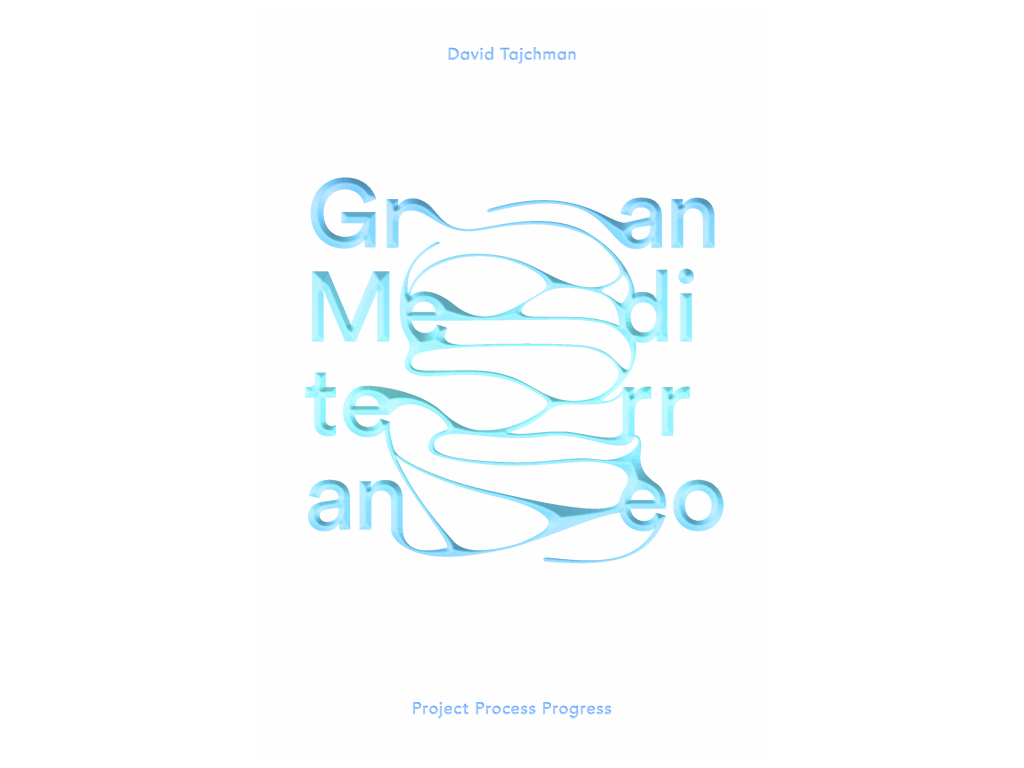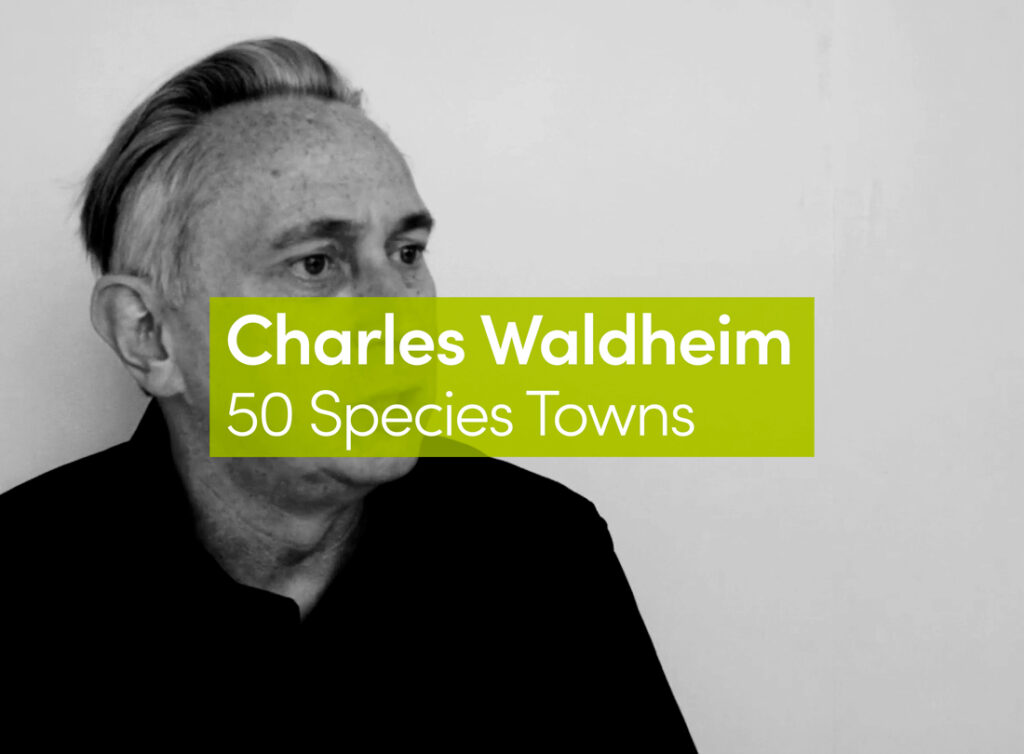Recent attempts to address the urgencies of the great contemporary metropolis frequently dissolve into the domains of urban geography, urban sociology, or urban ecology: so much so, that one begins to wonder if the discipline that Ildefonso Cerdá opened up—urbanism—exists beyond the limitations of the ethical or social contingencies specific to each urban formation. In Ciro Najle’s investigations, in contrast, we find no trace of this type of approach: instead, we find a resolute pursuit of a revision of the technical instrumentality and methodologies of modernity. Najle’s work is notable for its surprising and rigorous formalism. The architecture, the landscape, and the urbanism of modernity are sieved through the formal logics of process-driven informational and mathematical protocols, providing a response to the most decisive problem that the city presents to us today: that of providing consistent forms to contemporary urbanization as it unfolds before us on a brutal scale and at an explosive velocity.
We are generally accustomed to experiencing two types of approximations within schools of architecture: those concerned with the self-centeredness of the embellished architectural building, regarded as a recognizable and measurable object of scale, and those attempting the nostalgic and improbable exercise of controlling the urban by means of disciplinary resources of the most diverse affiliation. The laboratory that Najle has been directing for many years positions itself, with a particularly unusual stubbornness, beyond the limitations of both of these groups, largely as a result of what at first appears to be an impulsive conviction: that a projective methodology of the metropolis should be constructed with neither moral commentaries nor disciplinary debts but rather through the systematicity of the lab.
In the laboratory, the first step is to completely isolate the body under study and analyze its laws of proliferation. As Bruno Latour describes it, a laboratory is not a place disconnected from reality, where people are imbued with supernatural powers, but a place with a precise topology and a specific work mechanics. [1] Displacing the laboratory from the world—from the “out there”—allows the scientist to isolate a phenomenon from its customary context and examine it within the new setting. This is where true knowledge can be produced. Treated as new material, free of external competences, this isolated phenomenon shows its vital laws and crucial forces or weaknesses under ultimate conditions. From this new knowledge of its behavior, and through a process of trial and error, eventually an antidote emerges or a new field of experimentation opens up. These actions disrupt the traditional knowledge about the phenomenon and take it to a completely new domain, where the scale of analysis constantly varies from the micro to the macro. These languages of inscription involve procedures to write, teach, and register in the context of a prospective drive. [2] Surprisingly, often the solution to the recognized problem comes from inoculating the problematic body—or the body perceived as problematic—with higher doses of what, under different circumstances, would be, by itself, able to generate its own antibodies to combat. Such is the case of the anthrax vaccine, the discovery of which made Louis Pasteur a national hero in France.
Latour also draws attention to the point at which the experiment does not end inside the ascetic rooms of the laboratory but rather continues outside, requiring other work to be done. This work is not added on but implicit within the same experiment. It involves the construction of a rhetoric that endows the experiment with a social meaning: a movement from the laboratory to the society, a broadcasting and divulging movement, where the laboratory shows itself as the only repository of the specialized knowledge needed for social wellbeing. This again is the case with Pasteur, who could isolate the bacterium causing anthrax and find the laws that enable the discovery of its antidote, a knowledge that was unobtainable by other specialists (such as veterinarians and hygienists) who were working at the scale of natural reality. Presenting himself as a savior of French cattle, after the spectacular rehearsal of his vaccine, Pasteur became an unquestionable social force. If one understands politics as the speaking voice that represents the forces through which a society is molded, then Pasteur is a completely political man.
Recently, in his own laboratory, Najle has been working obsessively on the isolation of two phenomena that have had enormous impacts on the modern city: the topological, programmatic, and scalar transformations implicit in the idea of the skyscraper; and the expansive and self-sufficient explosion of grand real estate operations—residential, commercial, and infrastructural. His hypothesis is that both phenomena, ostensibly antiurban and regarded as marginal to any disciplinary discourse, are not only irreversible but also contain the key for a new approximation of a contemporary metropolitan project. Genetically hyper-productive, they launch and make incarnate not only the scalar but also the temporal leaps of the metropolis—temporal, because the city must now be produced as an instantaneous whole, without any historical sedimentation.
The formalism of this methodology is double: on the one hand, it is inspired by a scientific—or more concretely, mathematical—formalism based on the idea that formal systems are artifices, sets of rules and symbols that get joined to each other by logical chains that can be manipulated to configure new logical chains by means of protocols of iteration and proliferation. But this methodology is also intensely impregnated with the aesthetics of Kantian formalism, reborn in the 1960s as a movement against the emotional, romantic approximations of the successful informalism taking place back then. The critical fortune of this aesthetic formalism has been countered by its detractors to the point where it has been accused of being endogamic or onanistic, only to make more evident how antipathetic it can be to vindicate abstraction and disciplinary autonomy.
Within the architectural domain we find that, on various occasions, Najle suggests a precise and fertile genetic family that is highly revealing of the ultimate interest of his work. We could synthetically circumscribe this genealogy by making reference to three authors: Ludwig Hilberseimer, Robert Le Ricolais, and Andrea Branzi, whose influence, unlike that of many of their contemporaries who were more celebrated in their own time, has grown and expanded as time has passed. I will refer only to the most important aspects of their work to have received new life in Najle’s laboratory.
The abstraction of the metropolitan problems developed by Hilberseimer, both in Europe and America, is evidently one. The German planner’s aseptic exploration of the scalar and spatial logics of the new modern metropolis provide both a model for high density and a map for suburban sprawl. Also present—and why not—is the influence of the extremely beautiful calligraphies developed throughout Hilberseimer’s work, which now unfolds across Najle’s own. A similar absence of moral explanation is present throughout; the same acceptance and hypertrophy of technical and formal mechanisms. Even an analog concentration on the most intensive and extensive typologies speaks to us about a reference that is simultaneously procedural and formal.
In the work that Le Ricolais developed at the University of Pennsylvania we recognize another set of important characteristics, such as the definition of a field of research operating in the margins but still based on the historical disciplines. In the French architect and engineer’s case, experimentation concerns the forms that tension takes when considered in the context of microscopic biological structures. But we can also recognize the inspiration of Najle’s work in the aims of Le Ricolais’s investigation, radically different from those of his pragmatic contemporary, Buckminster Fuller, and obsessively anchored by a distinct lack of scalar properties, by the absolute absence of an immediate practical finality, and by the construction of precise families of objects, embedded and charged with an open logic— this being, from my point of view, one of the most notable values in the work of both.
In the work of Branzi—especially in No-Stop City (1969)—we finally find an entire set of features in common with Najle’s, but I would prefer to highlight only two of them. First, the format of the Italian architect’s work and its graphic technique: the pages of a book that succeed one another without comment, configuring a machinic world through the use of different pre-digital variants of the typewriter. And second, and more intensely, the great intuition of Branzi: the emergence of a new form of the sublime, no longer inspired by the scale and brutality of certain natural phenomena (as with Edmund Burke) as much as by the scale and brutality of human technical capabilities, and by the reduction of all historical complexity in the city to a minimum cycle with a wholly unknown, proliferating capability—the production/consumption cycle understood as a metropolitan desideratum.
I insist on these references (although here offered in the form of a mere blueprint) because they may enable an understanding of the reach, limits, fundaments, and aesthetics of a work, produced at the margins of almost all contemporary debates, that has been constructing, silently and patiently, not only an operative methodology whose fertility we will see materializing in the near future but also, and perhaps more importantly, a work that contains a precise aesthetic proposition, an idea of beauty—the Generic Sublime, in Najle’s own words—which I do not hesitate in presenting as both visionary and necessary: an aesthetics, it has to be noted, unreachable if not through the devices and methodological rigor self-imposed by its author. These provide some evidence not only of the academic value of this laboratory but, more broadly, of the urgent necessity with which architecture is confronted at present: to abandon the agitation to which we have comfortably accustomed ourselves and concentrate instead on what is possibly the only warranty of architecture’s survival—the identification of completely new models of formal and aesthetic consistency.













